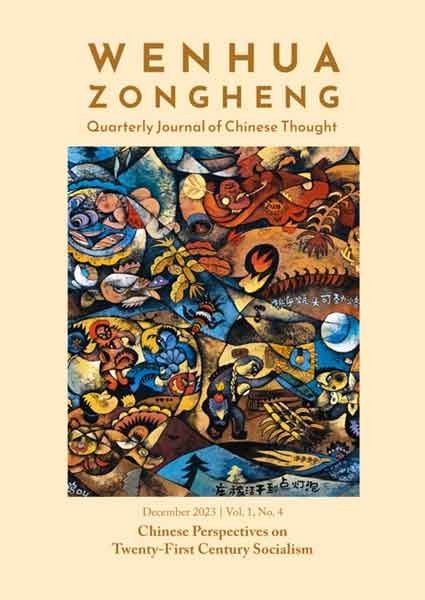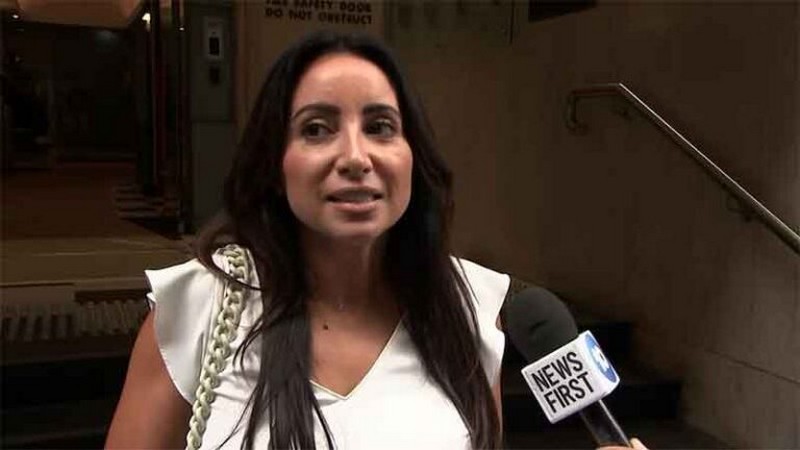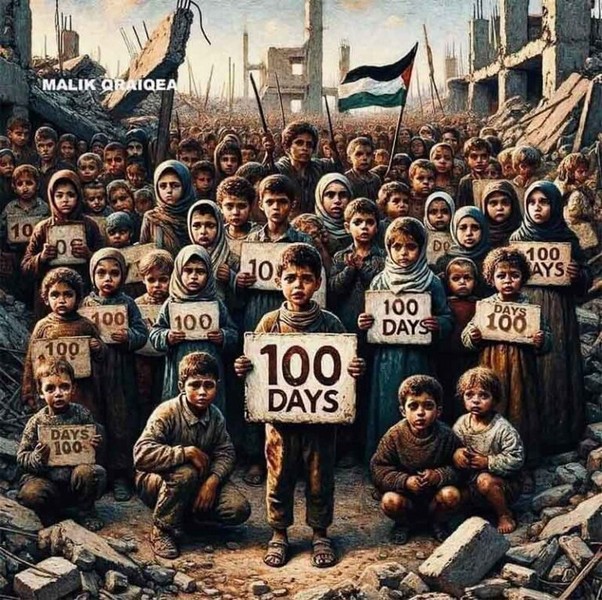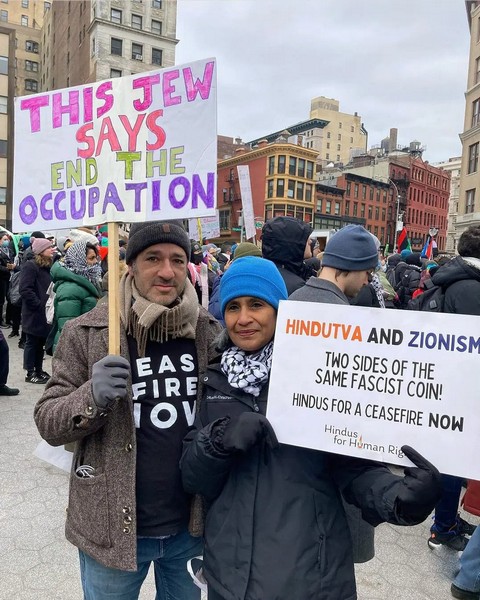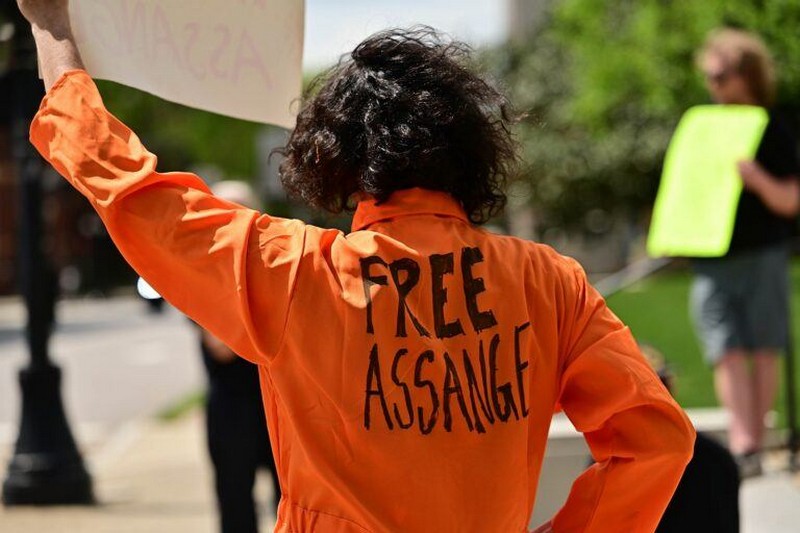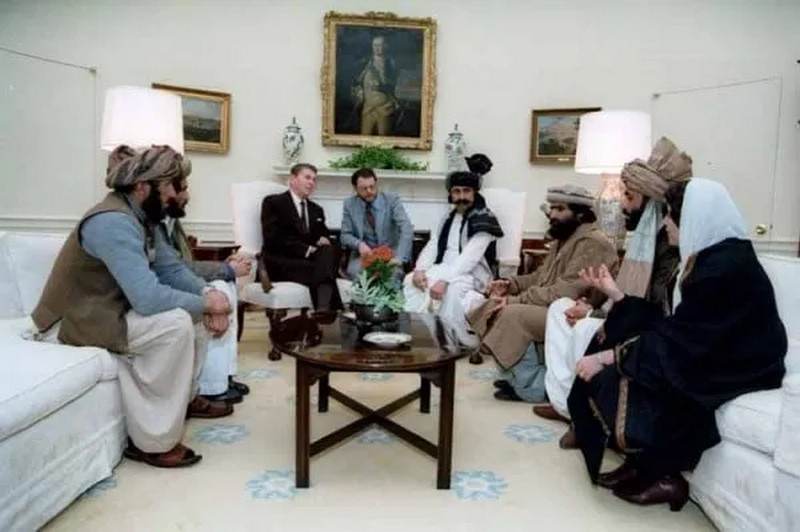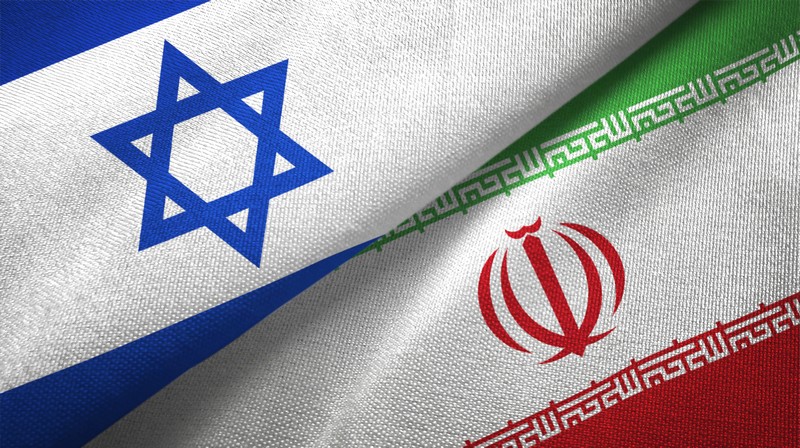And this must be part of the solidarity campaign, namely to reveal the truth regarding Washington’s insidious role, which is part of a carefully planned military agenda directed against Palestine and the broader Middle East. Netanyahu is a proxy, with a criminal record. He has the unbending support of Western Europe’s “Classe politique”.
The U.S.-led War on the People of Palestine and the Middle East Is a Criminal Undertaking
Quite the opposite. The Zionist lobby is firmly aligned with U.S. foreign policy, and vice versa. It targets those who are opposed to war, who call for a ceasefire. It exerts influence in favour of the conduct of the U.S. military agenda in support of Israel.
The US military-intelligence establishment in coordination with powerful financial interests is calling the shots in regards to Israel’s genocidal intent to “Wipe Palestine off the Map”.
2. Triggering “False Flags”
Let us be under no illusions. Remember Pearl Harbor, the Gulf of Tonkin, 9/11. “False Flags” are part of the history of modern warfare. They are sophisticated intelligence operations often requiring infiltration into enemy ranks.
Starting in the immediate wake of the October 7, 2023 Hamas attack, US-NATO war ships –including aircraft carriers, combat planes, naval vessels have been deployed in both the Eastern Mediterranean and the Red Sea.
These deployments have been described in chorus by the mainstream media as a response to “Palestine’s [alleged] Aggression against the Jewish State”.
They are tagged as humanitarian undertakings: Coming to the rescue of Israel. Responsibility to Protect (R2P).
The False Flag concept requires inciting your enemy or an armed jihadist group to confront or “attack America” thereby providing a justification to strike back in self defense: The Houthis in the Red Sea and Hezbollah in the Eastern Mediterranean both of which are allies of Iran.
Trigger one or more incidents with a view to justifying a process of military escalation.
In recent developments, the “False Flag agenda” has evolved towards US-NATO air and naval attacks against Yemen.
“Sadeh, Zubaydah, Abs, Bani, Sana, Hudaydah, and Taiz have been attacked by American forces, initiating yet another war without Congressional approval, a branch of the US government emptied of power.
The New York Times, of course, blames the expansion of the conflict on the Houthis for interfering with shipping to Israel.” (Paul Craig Roberts)
The endgame is to incite Iran through various means to enter the Middle East battlefield, which would lead eventually to a process of escalation. The media is now using the term: “Iranian Proxies” in an ambivalent report by the NYT:
According to US officials, there is no direct evidence linking Iran to Red Sea attacks
There is no direct evidence to show senior Iranian commanders ordered Yemen’s Houthi rebels to launch attacks on ships in the Red Sea, according to a New York Times report citing US intelligence officials.
The unnamed sources said they continue to assess that Iran isn’t interested in a wider war, even though it encouraged Houthi operations in the Red Sea.
“The whole purpose of the Iranian proxies, they argue, is to find a way to punch at Israel and the United States without setting off the kind of war that Iran wants to avoid,” the news report said.
“There is no direct evidence that senior Iranian leaders, either the commander of the elite Quds Force or the supreme leader, Ayatollah Ali Khamenei, ordered the recent Houthi attacks on ships in the Red Sea.” (Quoted by Al Jazeera)
3. America’s Military Doctrine: Targeting and Killing Civilians
Veteran War correspondent Felicity Arbuthnot reflected on the indescribable barbarity of the 2004 Fallujah massacre, which resulted in countless deaths and destruction. It was a genocide conducted by the U.S military:
“The Americans invaded, chillingly: “house to house, room to room”, raining death and destruction on the proud, ancient “City of Mosques.”
Marines killed so many civilians that the municipal soccer stadium had to be turned into a graveyard …
One correspondent wrote: “There has been nothing like the attack on Fallujah since the Nazi invasion and occupation of much of the European continent – the shelling and bombing of Warsaw in September 1939, the terror bombing of Rotterdam in May 1940.”
The U.S. is supportive of the Israeli genocide directed against the people of Palestine. Prime Minister Netanyahu is a criminal. He is Washington’s proxy, unreservedly endorsed and supported by the Biden Administration as well as the U.S. Congress.
Zionism constitutes the ideological underpinnings of contemporary U.S. imperialism and its unending war against the people of the Middle East.
The Zionist “Greater Israel” dogma –as in all wars of religion since the dawn of mankind– is there to mislead people Worldwide as to “who is really pulling the strings”.
Zionism has become a useful instrument which is embodied in U.S. military doctrine. The “Promised Land” broadly coincides with America’s hegemonic agenda in the Middle East, namely what the U.S. military has designated as the “New Middle East”.
Cui Bono: “To Whom Does It Benefit”
Who Are the Perpetrators?
The US military and intelligence apparatus are behind Israel’s criminal bombing and invasion of Gaza. The unfolding Middle East War is largely directed against Iran.
Video Interview: Michel Chossudovsky and Caroline Mailloux
Click here to watch the interview.
4. Iran and the Nuclear Issue
Historical Antecedents. Using Israel as a Means to Attacking Iran
In 2003, the war on Iran project (Operation Theatre Iran Near Term, TIRANNT)) was already déjà vu. It had been on the drawing board of the Pentagon for more than 15 years.
Let us recall that at the outset of Bush’s second term, Vice President Dick Cheney dropped a bombshell, hinting, in no uncertain terms, that Iran was “right at the top of the list” of the rogue enemies of America. And that Israel would, so to speak,
“be doing the bombing for us” [paraphrase] , without US military involvement and without us putting pressure on them “to do it”. For further details see my article below was first published by Global Research in May 2005, as well as PBS Interview with Z. Brzezinski
This Dick Cheney-style option is currently (November 2023) once more on the drawing board of the Pentagon, namely the possibility that Israel which is already bombing Lebanon and Syria, would be incited to wage an attack on Iran (acting on behalf of the United States).
US Congress Resolution (H. RES. 559) Accuses Iran of Possessing Nuclear Weapons
Careful timing: In June 2023, the US House of Representatives adopted Resolution (H. RES. 559) which provides a “Green Light” to wage war on Iran.
The US House passed a resolution that allows the use of force against Iran, intimating without a shred of evidence that Iran has Nuclear Weapons:
Resolved, That the House of Representatives declares it is the policy of the United States—
(1) that a nuclear Islamic Republic of Iran is not acceptable;
(2) that Iran must not be able to obtain a nuclear weapon under any circumstances or conditions;
(3) to use all means necessary to prevent Iran from obtaining a nuclear weapon; and
(4) to recognize and support the freedom of action of partners and allies, including Israel, to prevent Iran from obtaining a nuclear weapon.
Click here or image below to access the complete text of H. RES 559
Israel’s Undeclared Nuclear Weapons Arsenal
In recent developments, Israeli Heritage Minister Amichai Eliyahu, “admitted to the world that Israel has nuclear weapons ready to be used against Palestinians.”
The Times of Israel reported that: “Amichai Eliyahu said Sunday [November 5, 2023] that one of Israel’s options in the war against Hamas was to drop a nuclear bomb on the Gaza Strip.”
Video on Israel’s Nuclear Weapons Facility
Israel’s Dimona Nuclear Weapons Factory In 3D
5. The War on Energy
Reserves of Natural Gas: Iran ranks second after Russia. Russia, Iran and Qatar possess 54.1 percent of the world’s reserves of natural gas.
- Russia 24.3%,
- Iran 17.3%,
- Qatar, 12.5 % (in partnership with Iran)
versus
- 5.3 % for the US
President Joe Biden ordered to “blow up” (September 2022) the Nordstream Pipeline, which constitutes a U.S. act of war against the European Union.
In the words of Joe Biden:
“There will be no longer a Nord Stream 2”. Statement at White House Press Conference (February 7, 2022)
America’s strategic objective is, despite its meagre reserves of natural gas:
To force the European Union to buy LNG “Made in America”.
What this implies is that America’s military agenda against Russia and Iran constitutes a means to hike up EU energy prices, which is an act of economic warfare against the people of Europe.
The Iran-Qatar Natural Gas Partnership
The maritime gas reserves of the Persian Gulf are under a (joint ownership) partnership between Qatar and Iran.
The Biden Administration Is Intent Upon Destabilizing the Iran-Qatar Partnership
This partnership is supportive of the people of Palestine.
In March 2022, “President Joe Biden following a meeting with Qatar’s Emir Sheik Tamim designated Qatar as a major non-NATO ally of the United States, fulfilling the promise that he had made to Qatar earlier this year [2022], the White House said” (Reuters, March 10, 2022 )
“The designation is granted by the United States to close, non-NATO allies that have strategic working relationships with the U.S. military.
Biden promised Qatar’s emir, Sheikh Tamim bin Hamad al-Thani, in January [2022] during a meeting at the White House that he would grant Qatar the special status.” Reuters. See also Reuters (January 31, 2022)
What is at stake are cross-cutting coalitions. Qatar is a “partner” of Iran in relation to the strategic reserves of maritime gas in the Persian Gulf. There is no formaI military cooperation between the two countries.
Washington’s unspoken agenda is to break and/or destabilize Qatar’s partnership with Iran, by integrating Qatar into the US-NATO military orbit.
It is worth noting that a few days prior to the October 7, 2023 Hamas operation, the Emir of Qatar Sheik Tamim bin Hamad Al Thani “laid the foundation stone for the Northern Dome expansion project” in Iran’s Pars South Field (See map above).
“the Emir of Qatar said the groundbreaking for the Northern Dome expansion project was laid today, which is in line with Qatar’s strategy to strengthen its position as a global LNG producer …
This joint gas field, known as “South Pars” in Iran, is the largest natural gas field in the world and contains 50.97 trillion cubic meters of gas and about 7.9 billion cubic meters of natural gas condensate.
At the time of writing, the implications of Sheik Tamin’s October 2023 expansion project in South Pars Fields (which is in Iranian territorial Waters) as well as Qatar’s “Special Status” Military Alliance with the U.S. remain unclear.
America’s Al-Udeid military base in Qatar is the largest US base in the Middle East.
Have the status and functions of Al Udeid changed since the signing of the March 2022 agreement designating Qatar as a “major non-NATO ally of the US”?
Qatar is both a partner of Iran as well as a major non-NATO ally of the U.S. Reports confirm the development of a close relationship between the commanders of the US Air Force and the Qatari Emiri Air Force.
Qatar Is a “Powder Keg”?
The U.S. foreign policy objective is to ultimately destroy and undermine that “friendship” with Iran which is highly valued and supported by Qatari citizens.
The export of gas from South Pars North Dome transits through Iran, Turkey and Russia.
Qatar, Russia and Iran (the 3 largest holders Worldwide of natural gas reserves) reached an agreement in 2009 to create a ‘Gas Troika’, a trilateral gas cooperation entity including the development of joint projects.
A large number of countries including South Korea, India, Japan, China are importing LNG from Qatar.
Last year (November 2022), “QatarEnergy signed a 27-year deal to supply China’s Sinopec with liquefied natural gas.” Qatar has also a strategic alliance with China.
Washington’s objective under the disguise of America’s “Major Non-NATO Alliance” with Qatar is to:
- Break the Qatar-Iran Partnership
- Exclude Iran from the Joint Maritime Gas Field
- Exert US Control over the Maritime Gas Field in the Persian Gulf
- Weaken and Disable the “Gas Troika” (Russia, Iran, Qatar)
- Create Chaos in the Global Energy Market,
- Undermine the Trade in Liquid Natural Gas (LNG) to Numerous Countries
Iran. Third Largest Reserves of Oil Worldwide
Iran is not only second in terms of its gas reserves after Russia, it ranks third Worldwide in relation to its oil reserves (12% of worldwide oil reserves) versus a meagre 4% for the U.S.
6. Strategic Waterways: The Ben Gurion Canal Project
U.S. Seeks Dominance Over Strategic International Waterways
The Ben Gurion Canal Project was initially a “secret” (classified) U.S. project formulated in 1963 by the Lawrence Livermore National Laboratory LLNG, a strategic think tank (focussing on nuclear radiation) on contract with the U.S Department of Energy. The LLNG project was formulated in response to the nationalization of the Suez Canal in July 1956 by President Gamal Abdel Nasser (1956-1970). Its intent was to bypass the Suez Canal.
The Ben Gurion Canal project is currently contemplated as means control the channels of international maritime trade to the detriment of the people of the Middle East. It also seeks to destabilize China’s maritime commodity trade.
In the context of the broader US-led Middle East War, the Ben Gurion Canal Project is part of America’s hegemonic military agenda. It is consistent with Netanyahu’s “Plan to Wipe Palestine Off the Map”.
According to Yvonne Ridley:
“The only thing stopping the newly-revised [Ben Gurion Canal] project from being revived and rubber-stamped is the presence of the Palestinians in Gaza. As far as Netanyahu is concerned they are standing in the way of the project” (Yvonne Ridley, November 10, 2023, emphasis added)
The U.S led war is intent upon confiscating all Palestinian territories, which would be appropriated by the State of Israel, acting as a strategic “Anglo-American Hub” in the Middle East:
The Ben Gurion Canal will give Israel in particular and other friendly nations the freedom from blackmail arising out of access to the Suez Canal.
Arab states have been leveraging the Red Sea to pressure Israel and in response, Israel has decided to gain more control of the Red Sea. These African countries have cultural and economic affinities with the Arab states. One of the main military benefits for Israel is that it gives Israel the strategic options as the Ben Gurion Canal will totally take away the importance of Suez for the US military if needed in the aid for Israel.
Israel aims to push Egypt further into a corner by eliminating Suez in the global trade and energy corridor and becoming a global trade and energy logistics center.
Experts are of the opinion that this situation will shake the strategic-energy balance of China’s Belt and Road Project initiative in the Mediterranean, along with the Strait of Hormuz, which is the transfer point of 30 percent of the world’s energy. The Ben Gurion Canal would have the solid backing of the West. (Eurasia Review, November 7, 2023, emphasis added)
7. “Greater Israel”. Strategic “Anglo-American Hub”
The Promised Land of Greater Israel Coincides with America’s Colonial Design in the Middle East
The Greater Israel design is not strictly a Zionist Project for the Middle East, it is an integral part of US foreign policy, its strategic objective is to extend US hegemony as well as fracture and balkanize the Middle East.
In this regard, Washington’s strategy consists in destabilizing and weakening regional economic powers in the Middle East including Turkey and Iran. This policy –which is consistent with the Greater Israel– is accompanied by a process of political fragmentation.
Since the Gulf war (1991), the Pentagon has contemplated the creation of a “Free Kurdistan” which would include the annexation of parts of Iraq, Syria and Iran as well as Turkey.
8. “America’s Promised Land”. Global Warfare
When viewed in the current context, including the siege on Gaza, the Zionist Plan for the Middle East coincides with America’s long war against the Middle East. As we mentioned earlier the Zionist agenda provides an ideological and religious justification of America’s long war against the Middle East.
- The 1979-80. the so-called Soviet Afghan War, engineered by the CIA
- The 1980-88 Iraq-Iran War engineered by the U.S.
- The 1991 Gulf War against Iraq,
- The 2001 The US-NATO Invasion of Afghanistan,
- The 2003 Invasion of Iraq
- The 2006 War on Lebanon,
- The Arab Spring,
- The 2011 war on Libya,
- The 2015 war on Yemen
- Obama’s 2014-2017 “Counter-Terrorism” Operation against Iraq and Syria
- The ongoing wars against Syria, Iraq and Yemen
The “Greater Israel” project consists in weakening and eventually fracturing neighboring Arab states as part of a US-Israeli expansionist project, with the support of NATO.
Needless to day, the ideological and religious underpinnings of the “Greater Israel” project are consistent with America’s imperial design.
While the Zionist agenda is not the driving force, it serves the useful purpose of misleading public opinion concerning America’s long war against the people of the Middle East.
The Historical Context: A Sequence of Military Plans and Scenarios to Wage War on Iran
Since the launching of the Theater Iran Near Term (TIRANNT) war games scenario in May 2003 (leaked classified doc), an escalation scenario involving military action directed against Iran and Syria had been envisaged, of which Syria was the first stage.
TIRANNT was followed by a series of military plans pertaining to Iran. Numerous post 9/11 official statements and US military documents had pointed to an expanded Middle East war, involving the active participation of Israel.
Israel is America’s ally. Military operations are closely coordinated. Israel does not act without Washington’s approval.
U.S.-Israeli Air Defense
Barely acknowledged by the media, the US and Israel have an integrated air defense system, which was set up in early 2009, shortly after the Israel invasion of Gaza under “Operation Cast Led”.
The X-band radar air defense system set up by the US in Israel in 2009 would
“integrate Israel’s missile defenses with the U.S. global missile detection network, which includes satellites, Aegis ships on the Mediterranean, Persian Gulf and Red Sea, and land-based Patriot radars and interceptors.” (Sen. Joseph Azzolina, Protecting Israel from Iran’s missiles, Bayshore News, December 26, 2008). )
What this means is that Washington calls the shots. Confirmed by the Pentagon, the US military controls Israel’s Air Defense:
”This is and will remain a U.S. radar system,’ Pentagon spokesman Geoff Morrell said.
‘So this is not something we are giving or selling to the Israelis and it is something that will likely require U.S. personnel on-site to operate.’” (Quoted in Israel National News, January 9, 2009, emphasis added).
At the outset of Obama’s Second Term, the US and Israel initiated discussions pertaining to a “US personnel on site”presence in Israel, namely the establishment of a “permanent” and “official” military base inside Israel.
And on September 17, 2017, a US Air Defense base located in the Negev desert was inaugurated.
According to the Israeli IDF spokesperson, the objective is to send a “message to the region,” including Iran, Lebanon, Syria and Palestine.
Of utmost relevance:
Israel would not be able to act unilaterally against Iran, without a green light from the Pentagon which controls key components of Israel’s air defense system.
In practice, a war on Iran, would be a joint US-NATO-Israeli endeavor, coordinated by US Strategic Command (STRATCOM) with America’s allies playing a key (subordinate) role.
[Read this article on Global Research.]


